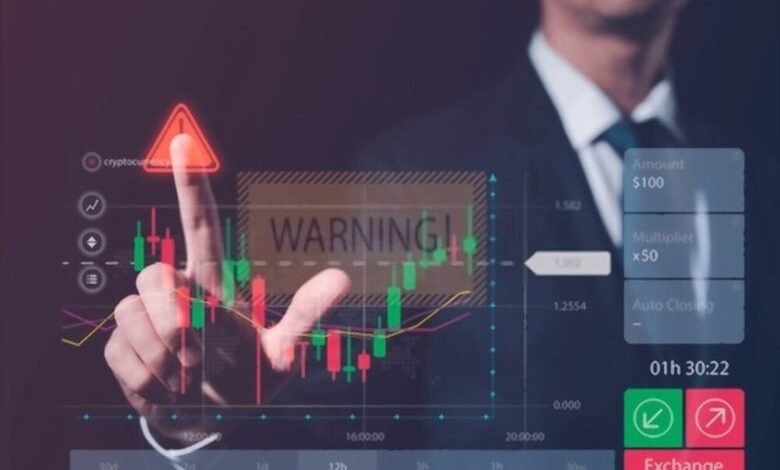How to Use Stock Alerts

In the current robust and dynamic stock market, it goes unsaid that investors require timely information for swift decision-making. Stock alerts, facilitated by top-end stock market tracking software and apps like StockMarketEye, Kubera, and Seeking Alpha, are essential players in supplying real-time notifications on asset price fluctuations and market movements. This article explores the importance of these alerts and the perks they generate for investment tactics, and it presents methods for effectively incorporating them into certain trading practices.
Without question, stock alerts are invaluable tools, empowering investors with actionable insights. By receiving timely notifications regarding market events, news releases, earning reports, and price movements, individuals can promptly make educated asset moves/choices. These alerts enable investors to spot opportunities, adjust market positions, and mitigate risk accordingly.
Incorporating stock alerts into investment strategies provides numerous advantages, allowing parties to monitor diverse asset portfolios via personalized alerts tailored to one’s preferences. That ensures punctual info on specific stocks, market, or sector conditions that align with their financial aims. On top of this, these alerts foster a proactive approach, preventing investors from missing critical developments like dividend announcements, price target hits, and surprising market trends.
In what follows, we seek to provide practical insights into how one can use stock alerts effectively, covering topics such as setting up personalized ones, grasping the different types that exist, and their functionalities while giving tips on maximizing their benefits.
Setting Up Stock Alerts
When trying to make the most of stock alerts, selecting a reliable service/platform that connects to trusted information sources is the crucial first step everyone must take. Hopefully, the choice will fall on one that also boasts multiple handy features. Currently, various options are available, so investors should consider factors like platform stability, data quality, and user reviews when selecting the software they settle on.
After a platform gets picked, investors should optimize their alert criteria to receive notifications aligned with their personal needs. The standard gauges most users prioritize are price movements, stock market volume alerts, app signals, ones for trading bulk, distinct technical indicators, and targeted news. These allow investors to focus on the information most relevant to their investment strategies. So, a high level of optimization ensures they get notices tailored to their interests, saving them time and effort.
Customizing alert settings based on individual preferences and objectives is paramount for effective alert utilization. Everyone should consider their risk tolerance, trading style, and investment horizons when setting them up. For instance, a person interested in long-haul investing is likely to prefer alerts for seismic news events or substantial price fluctuations. On the flip side of the coin, a short-term trader is probably more focused on intraday price movements or distinct technical patterns.
Moreover, investors can fine-tune their alert settings by adjusting parameters such as alert frequency, notification methods (email, SMS, mobile app), and the specific stocks or sectors they want to monitor closely. By customizing these settings, investors can receive alerts that align with their preferences, ensuring they stay informed without being overwhelmed by unnecessary notifications.
Understanding Alert Types and Parameters
As mentioned above, stock alerts come in several types, each serving a unique purpose in keeping investors well-informed. Price-based ones tell traders when assets hit a specific price level, activating actions like selling or buying. News-based alerts provide updates on relevant events through press releases, articles, or analyst reports that may and will influence performance. Volume-based ones track the trading volume to spot significant buying or selling trends. By understanding these and others, investors can leverage the appropriate alerts for their favored trading and portfolio-managing strategy.
Defining alert parameters and comprehending their significance is pivotal. Price thresholds establish the levels targeted at which traders want to get notified, which enables them to take advantage of price movements. Volume magnitude determines the trading activity that triggers a signal/alert, permitting investors to see stocks experiencing high levels of interest in the market. And news keywords aid traders in being updated timely on focus topics or events that may affect stock prices. Hence, by setting all of these parameters, an individual can guarantee that they will not be missing out on happenings that can assist them in achieving their investment goals.
Identifying the most relevant types of alerts for a chosen strategy is something everyone must do. Long-term investors may find price-based alerts useful for monitoring price levels or spotting purchasing opportunities during market dips. While active ones try to benefit from volume-based notifications to track stocks with increased trading activity, indicating potential short-term trading openings. Each tactic has its most appropriate batch. Remember that.
Interpreting Stock Alert Notifications
When someone gets a stock alert notification, it is important to understand how they get delivered. Traditional formats include email, SMS, and app notifications. Each has advantages, such as email providing detailed information and app notifications offering real-time updates. Knowing these, investors can choose the one that suits their preferences and get prompt access to critical info.
Analyzing the information provided in an alert is vital for informed decision-making. Consequently, stock tracking software users should pay attention to elements like the stock symbol, trigger event (like news articles or price movements), and timeframe (meaning intraday or long-term trends). And by carefully examining these, traders can appraise the relevance of the alert and select the best course of action.
Nevertheless, it is equally essential to know or to have an idea of the bigger picture and the implications of each alert within the overall market conditions and one’s investment targets. That is why no decision should get made without first considering aspects such as trends in the market and sector performance.
Performing Further Research and Analysis
When a captivating alert comes in, a user/investor must embark on a short journey of trading due diligence. That is imperative for making informed decisions. The first step in this procedure is assessing the reliability and credibility of the alert source, factoring in things such as reputation, track record, and transparency. That, without argument, lays the foundation of trust in the information received.
Then comes delving deeper and exploring additional resources that complement the alert. That can include seeking wisdom from financial insiders, analysis reports, media outlets, and reputable industry websites that offer invaluable insights into the alerted assets. Uncovering the underlying fundamental data, a reference to financial statements, and industry trends comes with embracing the guidance of technical indicators that will certainly reveal market sentiment and future price movements.
It goes without saying that weaving together multiple threads of knowledge, validating the alert information, and cross-referencing them gives a comprehensive overview of an asset’s potential.
Monitoring and Managing Alerts
As a rule of thumb, no investor using a tracker app should be without a system for tracking and organizing alerts. That ensures efficient monitoring of multiple assets and that no vital notice slips through the cracks.
Regularly reviewing and adjusting alert settings is principal to adapting to changing market conditions and evolving goals. Everyone must have the time to assess their alert criteria. Their price thresholds or news keywords, and make mandatory tweaks so that their approach/plan better falls in line with their end goal.
Tracking the performance of alerted stocks lets traders evaluate the effectiveness of their alert tactic while also permitting them to keep an eye on how these assets are performing over time, comparing them to benchmark indices or portfolio targets. Such an appraisal gives valuable data for assessing the accuracy and relevance of the alerts tracking software delivers.
Avoiding Pitfalls and Limitations
While stock alerts are super helpful, they have limitations and drawbacks. They are not foolproof and cannot capture every relevant detail for any investing system. Thus, no one should rely solely on them, falsely believing that they will instantly, and without a miss, give them all the lowdown necessary for market movements. Maintaining a balanced approach to decision-making means considering other factors like research and analysis alongside alerts.
False signals and volatility are two things that should also be in the back of investors’ heads. These can play dramatic roles in the investment process. Alerts can get impacted by short-term fluctuations or misleading information. Accordingly, conducting independent analyses and verifying their credibility should be common practice before an investor makes a decision based on them. By staying aware of these factors, traders can more easily navigate the ever-changing world of asset trading wisely.
Advanced Techniques and Strategies
Of course, several techniques exist in any trading area that can elevate one’s investing game. One popular approach entails blending several alert types (news-based, price-based, and volume-based) for a synergistic mix that can supply a holistic overview of market dynamics and reveal hidden opportunities.
Leveraging alerts for specific trading styles are also on the table as a method for optimizing results for different tactics utilized. For instance, day traders thrive on real-time alerts for quick decision-making, while swing ones rely on them to benefit from short-term trends. Long-term traders, yet, in most cases, try to gain insights from these alerts that will unveil shifts in fundamentals. By aligning alerts with a preferred style, investors can fine-tune their tactic, boosting their odds of success.
Also, while seeking to benefit from alerts, leaning on, or asking for expert advice, drawing on the experiences of seasoned traders is invaluable and should never be underestimated. People who have been in the arena for decades can unleash guidance that can circumvent newbie pitfalls and deliver a broader perspective on effective alert utilization.
The Wrap Up
In the subheadings above, we have covered the importance of reliable alert services, picking preferred criteria, and customizing settings to align with individual target marks. We also slightly surveyed the different asset notice types, reviewed some of the present notification formats, and emphasized the impact that independent analysis and timely info can have on stock investing.
For those who have not gone into the asset trading waters, there is no time like the present. While the number of people may not be as high as fifteen years ago, it is growing year on year, and technology gives traders tools that previously, not even premium brokerages, had at their disposal.
Therefore, now is the time to embrace the potential that trading apps bring, utilizing their stock alerts to stay informed, leveraging them to seize market openings, and always making super-informed decisions.
Never forget that everyone in the trading sphere continuously learns from their experiences. So, that means that one’s alert usage should get modified over time, as every person in this landscape tries to stay attuned to changing market dynamics. Only such a proactive approach guarantees that an alert strategy shall remain effective and follow one’s evolving investment objectives. That kind of mindset, paired with a solid foundation of investment knowledge, a thoughtful integration of stock alerts, and a commitment to ongoing education, will give anyone a terrific probability of trading with success.






